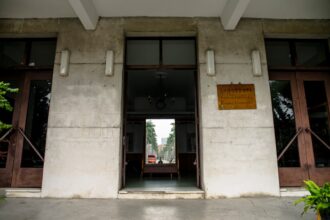Operation Pastorius emerged during a tumultuous period in history, as World War II raged across Europe and the Pacific. The operation was conceived by the German military as a response to the United States’ entry into the war following the attack on Pearl Harbor in December 1941. The Nazis recognized that the American industrial and military capabilities posed a significant threat to their ambitions.
In an effort to undermine the U.S. war effort, Adolf Hitler authorized a plan to infiltrate American soil with trained saboteurs who would carry out acts of sabotage against key infrastructure and industries. The name “Operation Pastorius” was derived from the name of a German-American, Johannes Pastorius, who was one of the early settlers of Pennsylvania.
This choice of name was symbolic, reflecting the operation’s intent to exploit the existing German-American community in the United States. The plan aimed to create chaos and fear, disrupting production and instilling a sense vulnerability among the American populace. The operation was not merely a military endeavor; it was also a psychological campaign designed to shake the confidence of the American people and their government.
Key Takeaways
- Operation Pastorius was a Nazi plan to infiltrate America and sabotage key targets during World War II.
- The saboteurs were carefully selected and trained in Germany before being sent to America to carry out their mission.
- The execution of the plan was hindered by various factors, including the capture of some of the saboteurs and their subsequent cooperation with American authorities.
- The discovery and arrest of the saboteurs led to a high-profile trial and sentencing, with some of them being executed for their actions.
- Operation Pastorius had a significant impact on American security measures, leading to increased vigilance and counter-sabotage efforts.
The Plan to Infiltrate America
The strategy behind Operation Pastorius involved sending a group of saboteurs to the United States via submarine. The plan was meticulously crafted, with specific targets identified across the country, including factories, railroads, and other critical infrastructure that supported the war effort. The German High Command believed that by striking at these vital points, they could significantly hinder American military production and logistics.
The saboteurs were tasked with carrying out acts of sabotage that would create widespread panic and disrupt daily life. The plan included not only physical destruction but also the potential for psychological warfare, aiming to instill fear in the hearts of Americans. The operation was ambitious, reflecting the desperation of Nazi Germany as it sought to turn the tide of war in its favor.
However, the execution of such a plan required careful consideration of logistics, timing, and the ability to blend into American society without drawing attention.
The Selection and Training of the Saboteurs

The selection process for the saboteurs involved identifying individuals who possessed both the necessary skills and a strong commitment to the Nazi cause. The chosen operatives were primarily German nationals who had lived in the United States or had connections to American society. This familiarity with American culture was deemed essential for their success in blending in and executing their missions without arousing suspicion.
Once selected, the saboteurs underwent rigorous training in Germany. They were instructed in various forms of sabotage, including how to destroy factories and transportation networks effectively. Additionally, they received training in espionage techniques, such as how to gather intelligence and avoid detection by law enforcement agencies.
This preparation was crucial, as the operatives needed to be well-versed in both their objectives and the environment they would be operating within.
The Execution of the Plan
| Metrics | Q1 | Q2 | Q3 | Q4 |
|---|---|---|---|---|
| Revenue | 500,000 | 600,000 | 700,000 | 800,000 |
| Profit | 100,000 | 120,000 | 140,000 | 160,000 |
| Customer Satisfaction | 85% | 87% | 89% | 91% |
In June 1942, the saboteurs were transported to the United States aboard a German U-boat. They landed on Long Island, New York, and were tasked with executing their plans almost immediately. Upon arrival, they split into two groups, each assigned specific targets across different regions of the country.
The urgency of their mission was palpable; they understood that time was of the essence if they were to achieve their objectives before being discovered. However, despite their training and preparation, the execution of Operation Pastorius faced immediate challenges. The saboteurs struggled with logistical issues, including obtaining materials necessary for their sabotage efforts.
Additionally, they encountered difficulties in navigating American society without drawing attention to themselves. As they attempted to carry out their missions, it became increasingly clear that their plans were fraught with complications that would ultimately lead to their downfall.
The Discovery and Arrest of the Saboteurs
The unraveling of Operation Pastorius began shortly after the saboteurs arrived in America. One member of the group, George John Dasch, became disillusioned with the mission and decided to turn himself in to U.S. authorities. He provided detailed information about the operation, including names, locations, and intended targets. His decision marked a turning point in the investigation, as it allowed American intelligence agencies to act swiftly. Dasch’s confession led to a coordinated effort by federal agents to apprehend his fellow saboteurs before they could execute their plans. Within days, several members of the group were arrested, and evidence of their intentions was uncovered.
The discovery of Operation Pastorius not only thwarted a significant threat but also underscored the importance of vigilance in national security.
The Trial and Sentencing of the Saboteurs

Following their arrest, the remaining saboteurs were put on trial before a military tribunal. The proceedings were marked by intense scrutiny and public interest, as Americans grappled with the implications of foreign sabotage on their soil. The trial was conducted under wartime conditions, which allowed for expedited legal processes that would not typically be permissible during peacetime.
The tribunal ultimately found all eight saboteurs guilty of conspiracy and other charges related to their sabotage efforts. In August 1942, six of them were sentenced to death by electric chair, while two others received prison sentences due to their cooperation with authorities. The swift justice meted out during this trial reflected both a desire for retribution against those who threatened national security and a commitment to maintaining order during a time of crisis.
The Impact on American Security Measures
Operation Pastorius had far-reaching implications for American security measures during World War II and beyond. In response to this attempted sabotage, U.S. authorities recognized the need for enhanced vigilance against espionage and sabotage activities.
This led to increased funding for intelligence operations and a more robust framework for counterintelligence efforts aimed at identifying potential threats before they could materialize. The lessons learned from Operation Pastorius prompted significant changes in how America approached national security. Law enforcement agencies began collaborating more closely with military intelligence to share information and coordinate responses to potential threats.
Additionally, public awareness campaigns were launched to educate citizens about recognizing suspicious activities within their communities. This heightened sense of vigilance became a hallmark of American society during wartime.
The Aftermath of Operation Pastorius
In the aftermath of Operation Pastorius, there was a palpable shift in public perception regarding national security threats. The realization that foreign operatives could infiltrate American soil created an atmosphere of anxiety among citizens. Many Americans became more aware of their surroundings and began reporting suspicious activities to authorities more frequently.
Moreover, Operation Pastorius served as a catalyst for further investigations into potential espionage activities within immigrant communities across the country. While many German-Americans remained loyal citizens, there was an increased scrutiny on individuals with ties to Germany or Nazi ideology. This scrutiny sometimes led to unjust treatment and suspicion directed at innocent individuals simply because of their heritage.
Lessons Learned from Operation Pastorius
The events surrounding Operation Pastorius imparted several critical lessons regarding national security and counterintelligence operations. One significant takeaway was the importance of rapid response capabilities when dealing with potential threats. The swift actions taken by U.S.
authorities following Dasch’s confession demonstrated how crucial timely intelligence can be in neutralizing risks before they escalate. Additionally, Operation Pastorius highlighted the need for effective communication between various branches of government involved in national security efforts. The collaboration between military intelligence and law enforcement agencies proved essential in apprehending the saboteurs quickly and efficiently.
This experience laid the groundwork for future cooperative efforts aimed at safeguarding American interests against both domestic and foreign threats.
The Legacy of Operation Pastorius
The legacy of Operation Pastorius endures as a reminder of the vulnerabilities faced by nations during times of conflict. It serves as an example of how even well-planned operations can falter due to unforeseen circumstances or internal dissent among operatives. Furthermore, it underscores the importance of vigilance in maintaining national security against external threats.
In contemporary discussions about national security, Operation Pastorius is often referenced as a case study in counterintelligence strategies and responses to sabotage attempts. Its lessons continue to resonate within intelligence communities as they navigate an increasingly complex global landscape marked by evolving threats.
Remembering the Victims of Nazi Sabotage in America
While Operation Pastorius is often remembered for its failed attempts at sabotage and espionage, it is essential not to overlook its broader implications for those affected by such actions. The potential destruction wrought by these saboteurs could have had devastating consequences for countless innocent lives if their plans had succeeded. As history reflects on this chapter from World War II, it is crucial to honor those who lived through this period with resilience and courage amidst uncertainty.
Remembering victims—both real and potential—of Nazi sabotage serves as a poignant reminder that national security is not merely about thwarting threats but also about protecting communities from fear and violence during tumultuous times.
Operation Pastorius was a failed German espionage mission during World War II, where eight Nazi agents were sent to the United States to sabotage key industrial targets. The operation was quickly compromised when two of the saboteurs turned themselves in to the FBI, leading to the capture of the entire group. For a deeper dive into the intricacies of this mission and its implications on wartime espionage, you can explore a related article on the topic by visiting In The War Room. This resource provides a comprehensive look at the events surrounding Operation Pastorius and its impact on U.S. security measures during the war.
WATCH THIS! 😱The Nazi Trial America Never Wanted You To See 😱
FAQs
What was Operation Pastorius?
Operation Pastorius was a failed German sabotage plan during World War II. It was named after Francis Daniel Pastorius, the founder of Germantown, Pennsylvania.
When did Operation Pastorius take place?
Operation Pastorius was launched in 1942 during World War II.
What was the goal of Operation Pastorius?
The goal of Operation Pastorius was to sabotage American economic targets and infrastructure in order to weaken the United States’ war effort.
Who were the key figures involved in Operation Pastorius?
The key figures involved in Operation Pastorius were eight German agents who were trained and sent to the United States to carry out the sabotage mission.
What were the targets of Operation Pastorius?
The targets of Operation Pastorius included power plants, water facilities, and transportation networks in the United States.
What happened to the German agents involved in Operation Pastorius?
The German agents involved in Operation Pastorius were captured by the FBI shortly after their arrival in the United States. They were tried by a military tribunal and six of them were executed, while two received prison sentences.
How did Operation Pastorius impact the course of World War II?
Operation Pastorius did not have a significant impact on the course of World War II, as the sabotage mission was foiled and the German agents were captured and dealt with swiftly.




